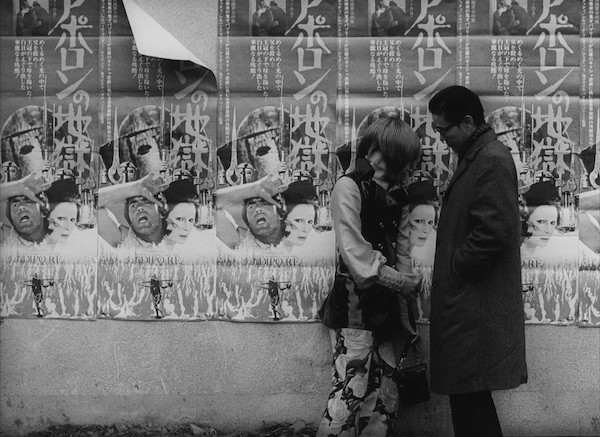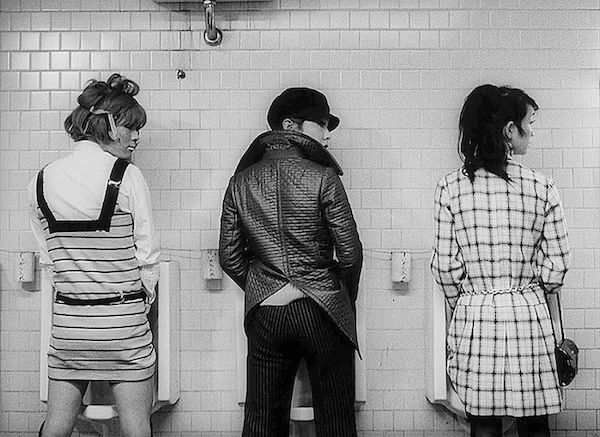“I am a wound and a sword, a victim and an executioner” are the first words that appear on the screen. A tender love scene follows, filmed in extreme close-up, that might have come from any black-and-white European art film of the 1960s. As the camera pulls back and the lovers begin conversing, we realize that they are actually two men. One of them is in drag. As the film unfolds, we learn that the fellow in drag is vying to take over the management of a gay club owned by his partner in sodomy. The current manager is the ex-ladyboy-friend of the owner. He (all of the drag queens in the film identify as “gay boys”) sports traditional geisha drag, in contrast to the new candidate’s mod girl look. Part documentary (the fourth wall is often broken for chats with the actors) and part drama (the story is based on Oedipus, Funeral Parade of Roses) has defied easy categorization during the 50 years since it was made. It never had any sort of U.S. release, until a 2017 restoration. This wildly experimental film is now available on DVD, and is making the rounds of the streaming services. It even played on Turner Classics during Pride month.
Toshio Matsumoto only made four feature films, but he made a score of shorts, and went on to focus on film installations. He also released books of photography. Funeral Parade of Roses (1969), was his first feature, and it’s the film he is remembered for. As legacies go, it’s a powerful work. Stanley Kubrick cited it as a major influence on Clockwork Orange. The film is set in the gay demimonde of 1969 Tokyo. One gets the sense that all of the locations are as real as the gay transvestites who populate the film. One jarring touch is the inclusion of a radical Japanese performance group called Zero Dimension, whose ritual street performances seem like a part of the anti-war demonstrations caught verité style during outdoor scenes.

Toshio Matsumoto, Funeral Parade of Roses [still], 1969.
The word “rose” has roughly the same slang meaning in Japan that “pansy” has in the English-speaking world. It can be hard to tell how many of the scenes in this film are contrived and how much is documentary. What at first appears to be an orgy is revealed as the subject of a porn shoot, where members of that shoot acknowledge the crew of Funeral Parade. What appears to be a serious confrontation between a cis-girl gang and three of the “roses” becomes a fight scene in the style of the 1960s Batman TV show. During any given scene the director might yell: “Cut!” and the camera will pull back to reveal the crew at work. By the time that the movie references Oedipus, the violence of that tale seems all the more shocking, given how much everything else feels like documentary footage. This is one of those found “lost” films that can cause you to reassess what you thought you knew about the past.


